While the art fair is often seen as the whore, selling its wares to those who can afford them, the Venice Biennale has always been the lady of the art world. The most venerated of biennales dating back to 1895; you can look, but not touch, intellectual stimulation and provocation is valued over the commercial, and nothing is for sale. Well, things have changed it seems. For weeks before the opening of the VIP previews my inbox was flooded with invitations for Biennale dinners, lunches, cocktail parties, and collateral exhibitions… hosted by galleries. That set the tone for the rest of the preview week. Just when you thought running from pavilion to pavilion was enough sport, this edition boasted as many events by commercial galleries, using the break between the Biennale and Art Basel as an opportunity to flog artists and push sales for their biennale-exhibiting artists. Try in Venice, buy in Basel.
Biennale curator of this year’s edition, Nigerian born Okwui Enwezor told one journalist, “The biennial is not commercial,” but gone are the days when biennales were the antidote to the commercial nature of art fairs. Increasingly galleries, dealers and collectors are becoming the main players behind the biennale. After all, as one art fair director pointed out, who else can afford to bankroll the parties and produce the bigger-is-better pieces demanded during the biennale? And big brands didn’t miss the opportunity for more exposure than a Victoria’s Secret catalogue: Roll’s Royce, Absolut, Swatch, Swarovski, Marni were all presenting exhibitions. The conflation of art and entertainment never ceases.
My week kicked off on Tuesday evening, fresh off the boat, with a palazzo party thrown by Hauser & Wirth and hosted by Achille Mauri in honour of his late brother, Italian artist Fabio Mauri whose work was featured in the Central Pavilion. Guests were entertained by the sleight of hand of Eddie the magician, a friend of Russian President Vladimir Putin apparently, who could make guests’ jewellery (including my wedding ring) and money disappear and reappear. The question “Can you make Vladimir Putin disappear?” was met with stony silence from Eddie, awkward laughter from a few, and guests nervously glancing over their shoulders.

As the night wore on yours truly regaled (or perhaps horrified) guests with an impromptu performance of an Amy Winehouse number, with vodka glass clutched tightly in hand. About as clever as Hong Kong Chief Secretary, Carrie Lam’s talk for the Hong Kong Pavilion opening of Tsang Kin Wah’s exhibition in which the undemonstrative civil servant proclaimed her admiration for the Venice Biennale, expressing her hope to one day bring it to Hong Kong. Perhaps she had the Venetian Casino in Macau in mind as a venue?

Wednesday morning we schlepped over to the beautiful Teatro Goldoni opera house to watch an off-site performance for the Cypress Pavilion, attended by Dhaka Art Summit artistic director, Diana Campbell Betancourt, Hong Kong Spring Workshop’s Mimi Brown, art patron Princess Alia Al-Senussi, and Art International Istanbul’s Stephane Ackermann, among others. The anticlimactic and unsurprising five-minute affair involved nothing more than a backdrop of blue sea slowly unrolling to the ground, and then packed up by three ‘stage hands’. It prompted a confused delayed clapping from the audience and one Turkish collector to cry out, “Are you fucking kidding me?!”
At the Biennale itself, performance art was in abundance; it was difficult to tell when art ended and reality began. On day three an artist walked around the Giardini almost naked in a state of confusion muttering to the trees (was it just the after effects of a big night at the Bauer?); a girl poured water from the canal over herself repeatedly in front of the Arsenale’s mega yachts; a troupe of actors decked out in period costumes carried Jesus to the Arsenale; a silent woman handed out folded up notes bearing the words ‘This is not performance art’ to passersby; and of course there was the ubiquitous presence of identically clad alopeciac duo, Eva and Adele who always add a bit of colour to the art fairs and biennales. Amidst the chaos and craziness of trying (and failing) to make every single pavilion opening under the influence of copious amounts of Prosecco, taking in the work of hundreds of artists in the dockyard Arsenale and Giardini buildings, and getting lost in Venice’s labyrinthine mazes to make various collateral exhibitions, there were quiet moments of beauty and poetry. I went back for a second time for Pamela Rosenkranz’s Swiss Pavilion, this time to a shorter queue. Experiencing it with a crammed sweaty crowd the first time, the exhibition seemed more like ‘the poor man’s James Turrell,” as one grumbling gallerist called it. But in the relative quiet the second time around the show revealed its magic. The Pavilion was transformed into an abstract incarnation of the human body, a colour saturated multi-sensory space for contemplation, with a Caucasian flesh-coloured pool of water. Over at the Japanese Pavilion, another long queue for Chiharu Shiota’s large-scale installation awaited us. Comprised of webs of red yarn stretched across the installation space, the exhibition was a crowd pleaser, delighting countless visitors who crammed into the exhibition space to bathe in the womb like coziness and warm glow of the installation.

Sarah Lucas for the British pavilion mounted a predictable exhibition of an assortment of assholes with cigarette butts, and a couple of sculptures that were mistaken for Franz West. It looked like a slick and expensive gallery show presented by a Harrovian with a puerile sense of humour, and had one journalist declaring it a ‘career ender’. The queue for the loos at least provided some relief at the end; this show made me so bored I wanted to start smoking again.
Billed as the Olympics of the art world with 136 national pavilions representing work, it’s unsurprising that the biennale is a platform for political commentary, protest, and controversy. And this year’s edition had plenty of it. Before the biennale had even kicked off the Kenyan government disowned its pavilion on the grounds that the selection wasn’t reflective of Kenya, with six of the eight artists included being Chinese, none of whom live or work in Kenya, and one Italian expat.
Although every edition seems to bring up the same old examination of the relevance of the national pavilion format and exploration of globalisation, this year’s was even more poignant with pavilions and artists cutting to the heart of contemporary political, social, and economic issues. Okwui Enwezor title for this, the 56th Venice Biennale, is All the World’s Futures, and it’s a dystopian and grim affair examining conflict, displacement, migration, racism, terrorism, inequality, Big Brother surveillance, with a critique of modern capitalism at the heart of it all. In the Arsenale Central Pavilion, British architect David Adjaye designed the Arena, a space for daily readings of Karl Marx’s Das Kapital (with a Karl Marx lookalike), directed by Isaac Julien. The irony of Marx for the art world VIPs was not lost on some. It was socialism as entertainment.
Geopolitics was played out with art across several pavilions. Responsible for the funding of the Ukrainian Pavilion, Ukrainian billionaire Victor Pinchuk revealed he has both a sense of irony and humour. The temporary Ukrainian Pavilion is titled Hope and occupies a space in front of the Russian owned mega yachts on the Riva dei Sette Martiri. A glass cube, the transparency of the Pavilion stood as an open invitation to passersby on the way to the Giardini and Arsenale. Early on in the preview week the Russian Pavilion, this year represented by Irina Nakhova, was hijacked by an anonymous Ukrainian art collective, #onvacation, donning military camouflage jackets, mimicking the incursion of Russia’s ‘little green men’ into East Ukraine. They were cleared out by apologetic Italian police, one of the group’s modelesque blondes informed me, but that didn’t stop the group from inviting visitors to “take a selfie in the pavilion of an occupying power of your choice’’. Occupations continued at the China, Turkey, Israel, Serbia and US pavilions.


Marking 100 years since the Armenian genocide, the Armenian Pavilion, a recipient of a Golden Lion award, mounted a beautiful exhibition at a monastery on the island of San Lazzaro degli Armeni. Curated by Turkish curator Adelina Cuberyan von Furstenberg, the opening was attended by a number of high profile Turkish collectors and curators, alongside Armenian guests. Weaving their way down the monastery corridors through the well-heeled champagne-sipping crowds, the Armenian monks (my companion initially mistook them for hipsters sporting the requisite Brooklyn beard) involuntary stole the show prompting many to an urgent desire for confession, and losing us half our group as we headed to dinner.

Swiss artist Christoph Büchel for the Iceland Pavilion created The Mosque: The First Mosque in the Historic City of Venice. The non-functioning mosque installation that took over the unconsecrated church of Santa Maria della Misericordia, was intended to highlight the fact that despite architecture shaped by centuries of Islamic commerce and culture, Venice has never had a mosque in its historic centre. The installation was surprisingly closed after just two weeks by Venetian authorities citing a breach of health and safety regulations.

The Greek Pavilion, presented by Maria Papadimitriou, resembled a decrepit workshop cluttered with taxidermy, animal hides, trinkets and tools. Intended as a reflection on man’s relationship with animal, the holes in the exhibition walls and general state of (deliberate) disrepair and abandon seemed instead to speak of the effects of EU imposed austerity measures.
At the newly erected sleek Denton Corker Marshall-designed Australian pavilion, Fiona Hall presented a beautiful and laborious Wunderkammer-like installation entitled Wrong Way Time. A panoply of sculptures, weaving (created in collaboration with indigenous Australian women from Tjanpi Desert Weavers), installations, and paintings, the exhibition addressed climate change and extinctions, collapsing markets, colonisation, and the power of sensationalised news media. One peephole installation, nicknamed the ‘Fox Box’, revealed a critical stab at Rupert Murdoch’s empire, with sensationalist headlines and ‘News of the Fukt World’ flashing before viewers’ eyes. I heard one effusive French couple calling it the most beautiful show in the biennale.

From maximalism I tagged along with gallerist Simon Lee over to the Austrian Pavilion for Heimo Zobernig’s severe austere minimalism. It was an exhibition of nothing. The pavilion was left bare, a white clean canvas of columns and architectural bones with a bit of architectural ceiling intervention. It served well as a palette cleanser, a space to stare vacantly into nothingness with a bottle of water and massage my aching feet. Not all welcomed the opportunity to zen out and not think about art; one curator was overheard remarking, “sometimes I think the easiest job in the art world is to be an artist”.

There was ample aimless swimming in a sea of pretension and mediocrity, as there is with every biennale. With hundreds of artists exhibited it can’t all be good, and after a few days of looking at art I was unable to even distinguish good from bad, or register what I was looking at. There was too much to take in in too short a time. Taking a break from the visual overload of the Biennale, I exhibition hopped over to Francois Pinault’s Punta della Dogana to see Danh Vo’s elegant and sparse group show, Slip of the Tongue which I enjoyed more than his presentation for the Danish Pavilion. At the Gallerie dell’ Accademia, the museum was almost empty, far from the madding crowd of the pavilions, and I was able to breath in the richness of the museum’s collection from Tintoretto, Veronese, Tiepolo and Bellini. Downstairs the museum mounted a special exhibition by venerated Arte Povera artist, Mario Merz, the first exhibition of the artist to be held in a public institution in ten years.

Friday I did one last exhibition dash meandering through the endless Venetian alleys to hunt down the offsite pavilions for Cyprus, Luxembourg, and Estonia, which presented a couple of short films depicting golden showers and fellatio by Jaanus Samma; jolting me out of my walking slumber in a way no triple espresso could. I also stumbled across Rob Pruitt’s Flea Market, curated by A Plus A gallery’s Tommaso Speretta. Inside the gallery was a hub of young artists making and selling all sorts of works- printed t-shirts, genital shaped bread rolls, and inner selfies with the orange clad ‘Guru Jimmy’.

Preview week ended with a bang at the ‘Istanbul in Venice’ party held at the St Regis on the island of San Clemente. Hosted by hotelier Sahir Erozan, who graciously showed us out to the poolside party, hundreds danced to the crowd-pleasing hits spun by the DJs. So many good looking people dancing the night (and rain) away and getting schvitzy to the music that it felt like a Berlin bisexual love-in instead of an art party. I could have sworn I was dancing with ‘50 Shades of Grey’ actor, Jamie Dornan, but that was probably just a good-looking Turkish boy lookalike, or the effects of the free bar.
Although the parties are finally over the Biennale will remain open until November 22, giving visitors plenty of time to check out the city’s elegant palazzi and abundant collateral events and exhibitions.
















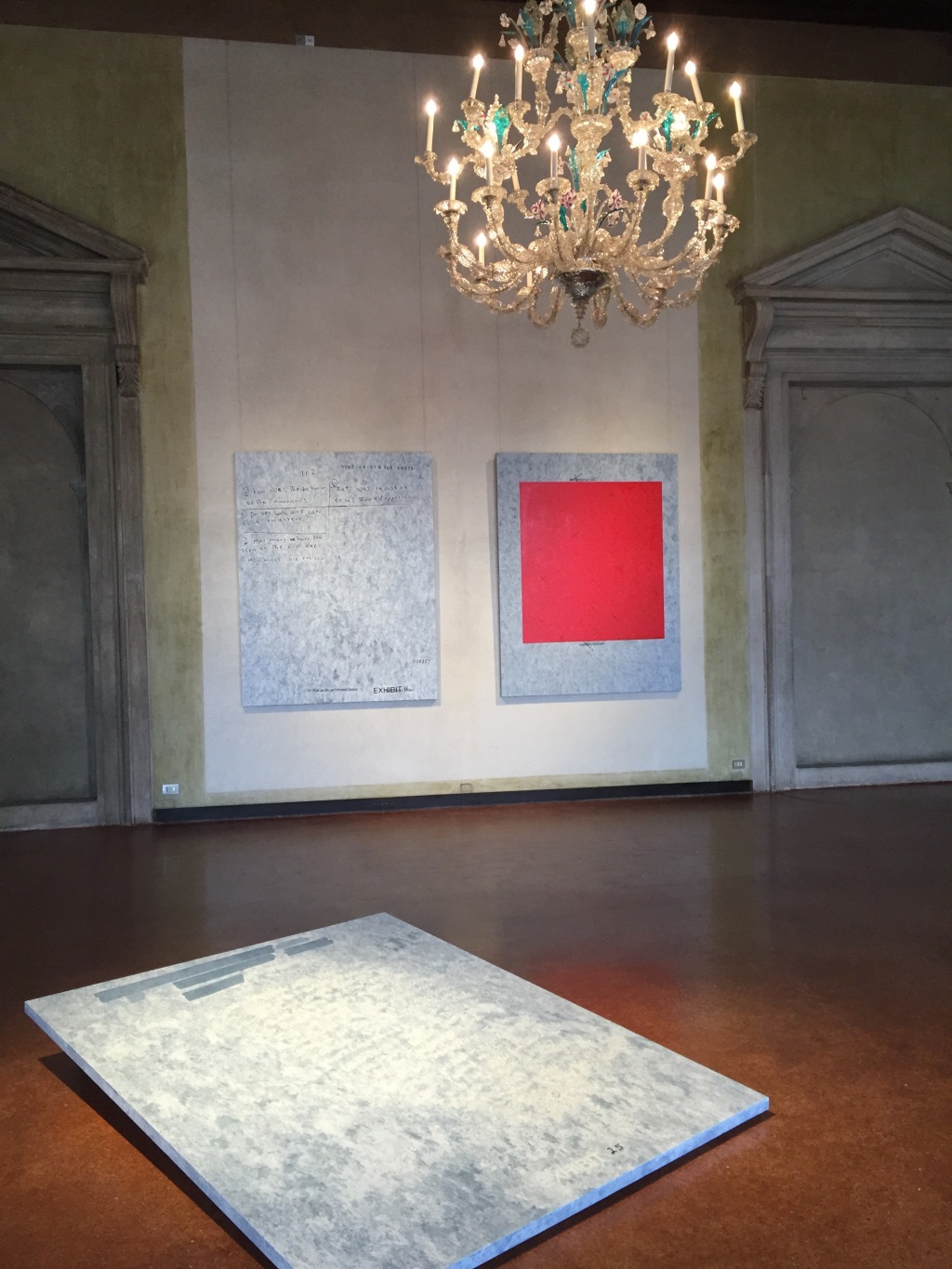




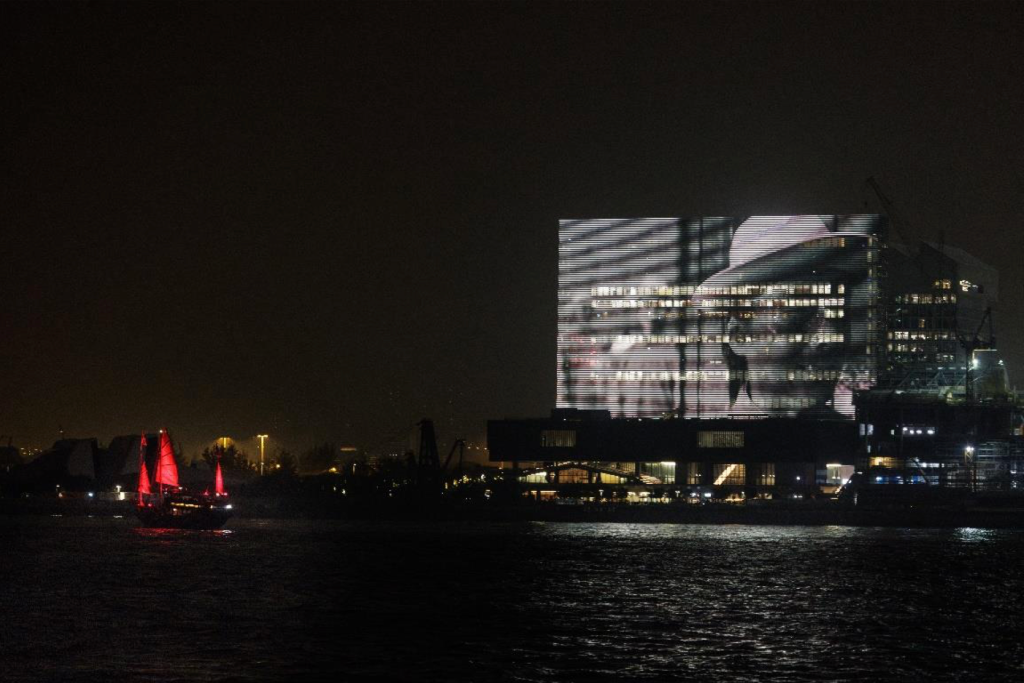
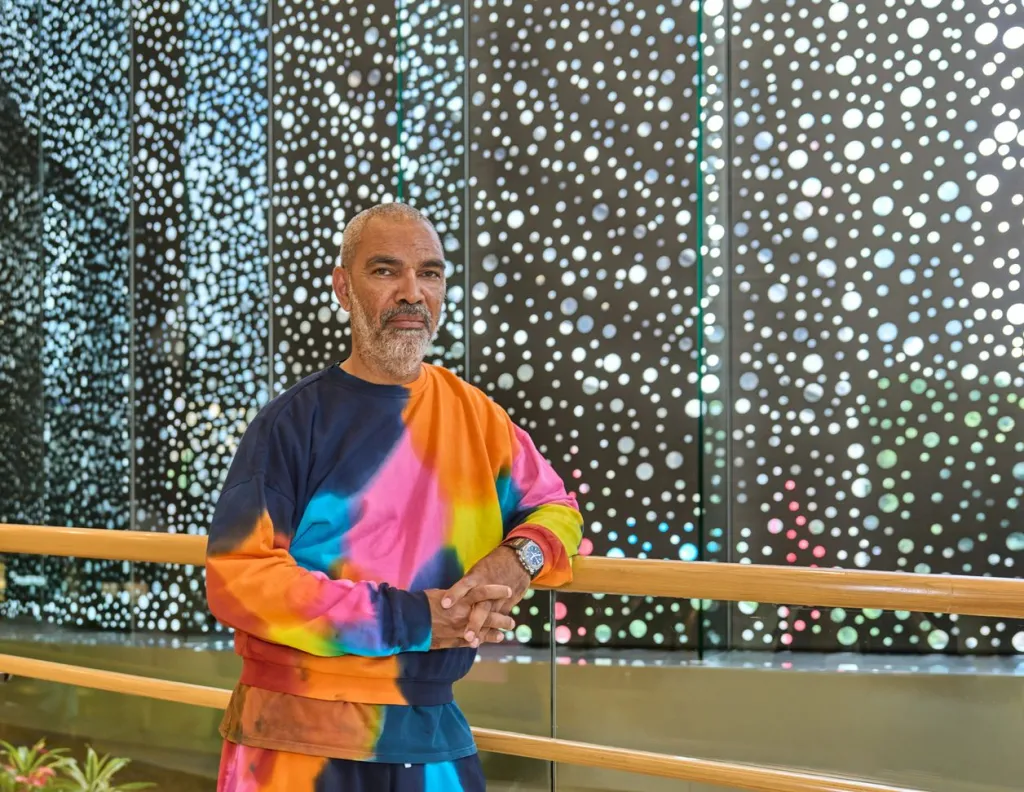
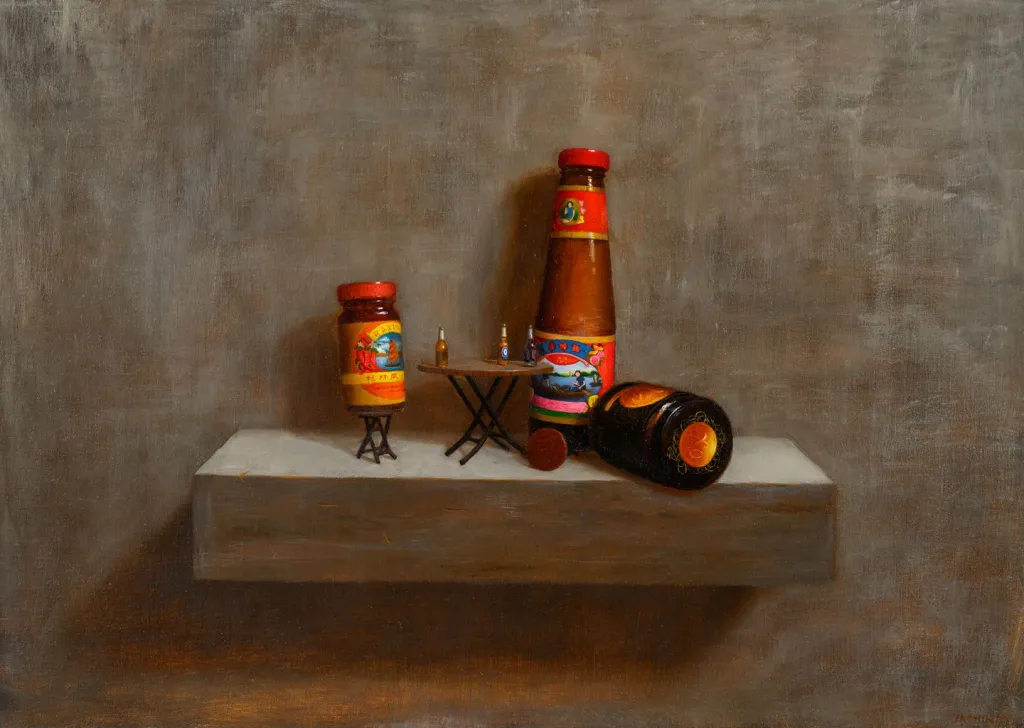
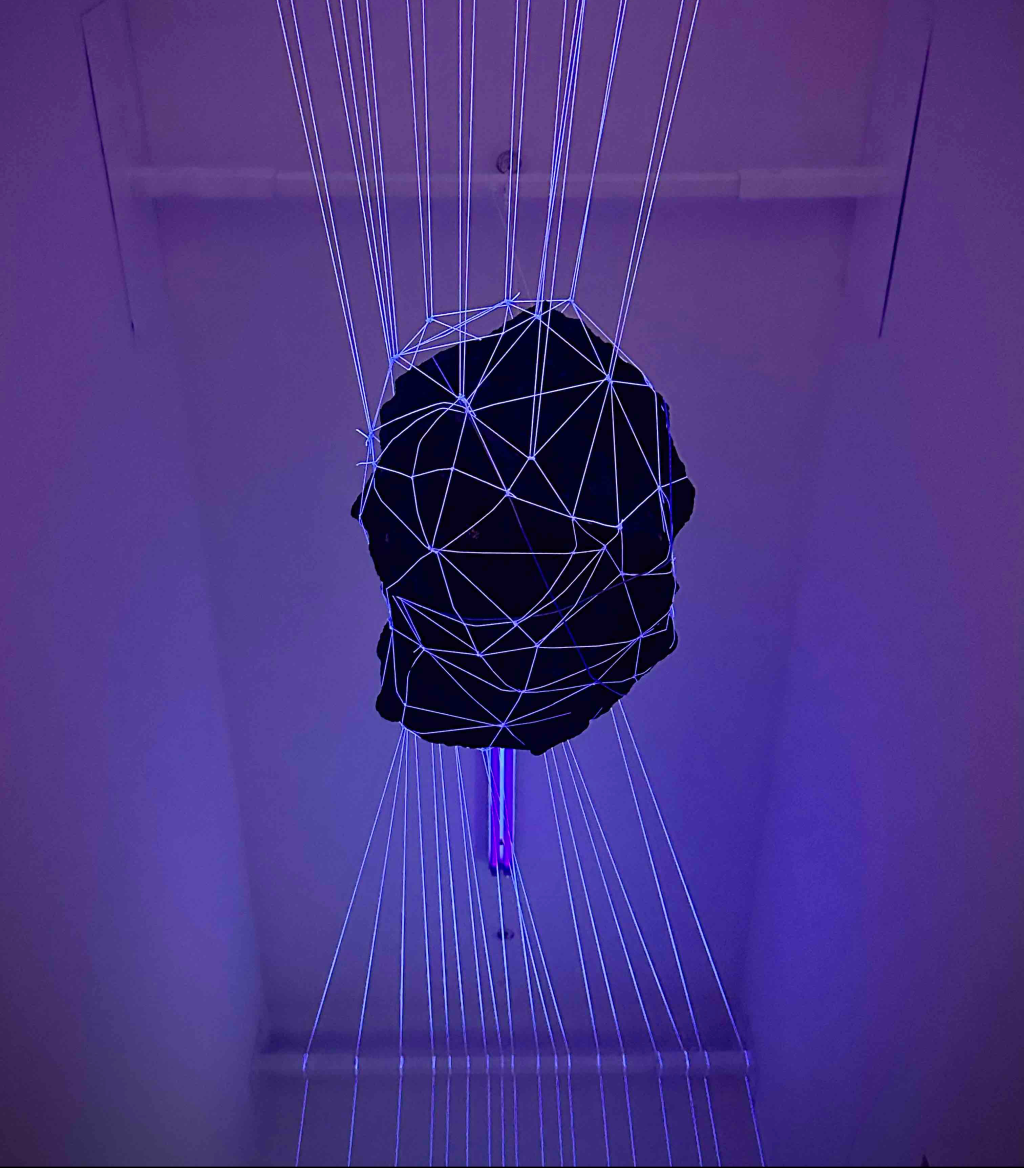
Leave a comment